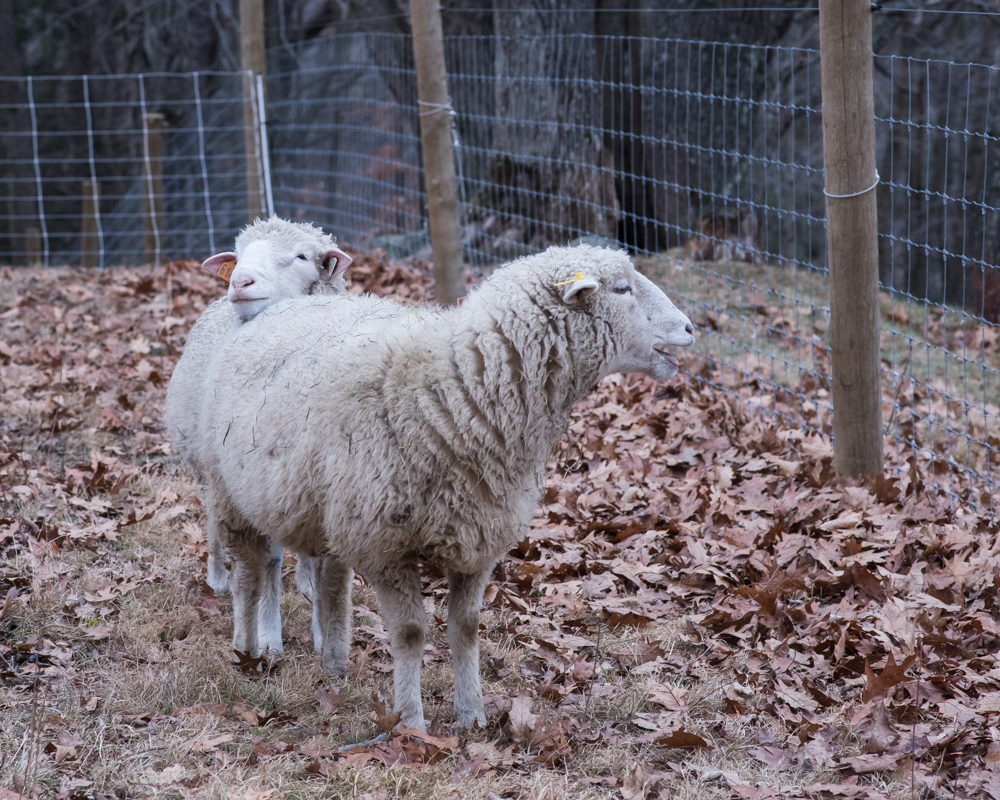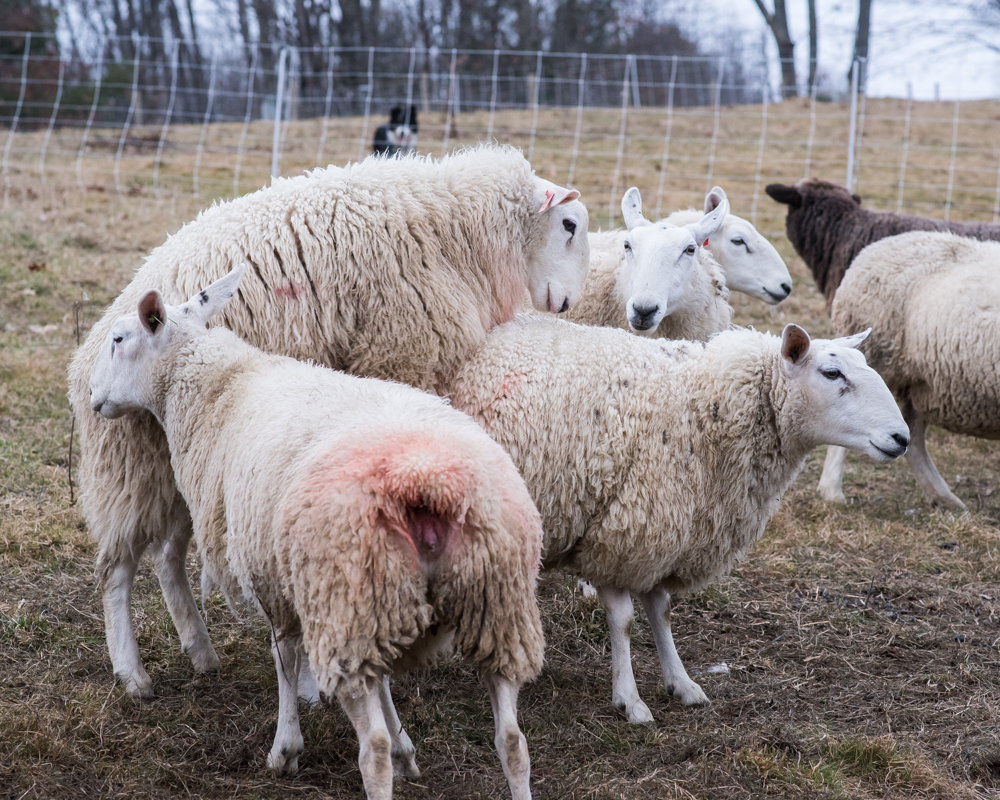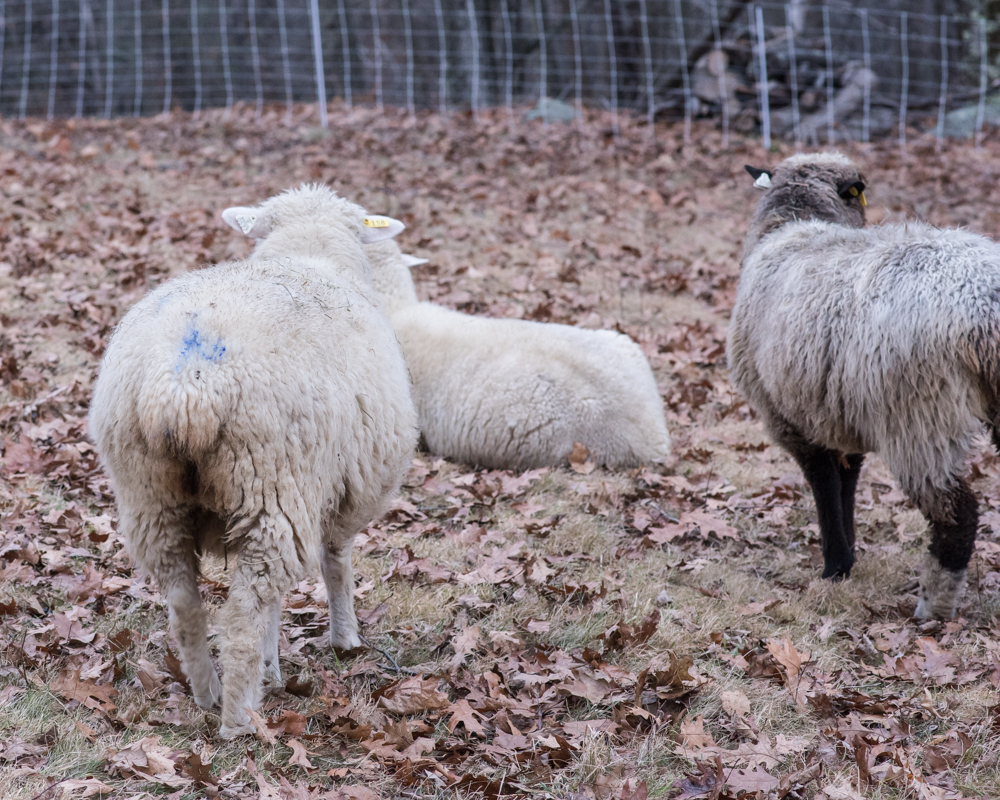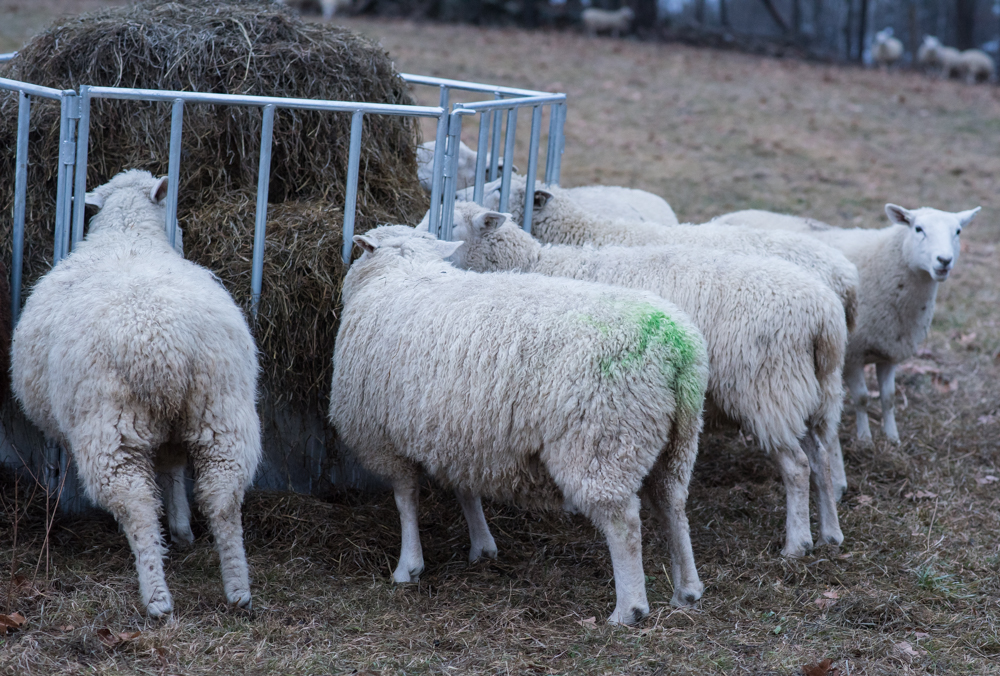Bill came over today to help me sort my flock into breeding groups. We brought the lambs and the main flock into the handling system and started by sorting out everyone who wasn’t going to participate — wethers,* ewe lambs, and ewes who were too small to breed — and sent them out to the back field. We sorted the remaining flock, 61 ewes, into groups for each of the four rams, and sent them to separate enclosures so that the rams would stay with the ewes we’d chosen for them. Here are the four groups, and some of the logic behind them:
- The katadhins are the easiest and most obvious breeding group: 8 katahdin ewes and one giant black katahdin ram. I didn’t want to cross the hair sheep with a wool breed this year, since the offspring lose the ability to shed their winter coat but don’t produce any useful wool. I’m curious to see if Angus the ram can add some size to the lambs. If his offspring don’t grow well, I might declare my katahdin experiment a failure.
- The dorsets are also pretty obvious: I have 8 dorset-border leicester crosses, and I’m breeding them to the fancy dorset ram I bought early this summer. He was advertised as carrying great maternal traits (prolific milk production, especially) as well as decent size. He’s refused to grow since I got him, so hopefully the other genetics aren’t a bust as well. He seemed a bit overmatched by the ewes today.

- The remaining 47 ewes are all part of the cheviot group. I used a border cheviot ram last year to sire my May lambs, and I liked everything about his offspring except their size — none of his lambs are really big enough to sell for meat right now. North Country cheviots are reputed to have all the good characteristics of border cheviots (easy lambing, vigorous lambs, hardiness and thrift, and a fair bit of attitude) along with bigger, more muscled bodies, so I got a North Country ram lamb recently. Since he’s only 7 months old, I limited him to 18 ewes: the 6 North Country ewes from Peter Helmetag, 7 of the 16 North Country mixes from Barbara Leverett, plus the 5 romneys. I included the romneys in this group for some of the same reasons I’m breeding Angus to the katahdins, to gain size in the lambs of a notoriously slow-growing breed.**
- After I chose 18 ewes for the North Country ram lamb (next year he should be able to handle 30-50 ewes), the remaining 27 went with the border cheviot ram I used last year. He’s now about 1½ years old, so he should be able to handle the bigger group. I gave him the remaining 9 North Country ewe from Barbara Leverett, all of the romney-cheviot crosses, all of the cheviot-dorper crosses, plus the 2 February ewe lambs. I’m very interested in finding out if there will be a noticeable difference in size between the lambs sired by the North Country versus the Border cheviot.
One of the tricks to the breeding game is to use a marker on the ram so it’s possible to tell which ewes have been bred. The traditional tool is something called raddle, a colored powder that you mix with oil and rub on the ram’s brisket. When he mounts a ewe, he leaves some of his color on her backside, proof of intent but not necessarily success.

I’m using different colors for different rams at the moment.


After 17 days, during which time the ewes should all have ovulated once, I’ll mix up the groups, letting all the rams consort with all the ewes. If a ewe ends up with a second color, it means that the first ram didn’t do his job, since she’s still ovulating.*** My preference is to have all my lambs in as short a time window as possible, so I hope all four rams do their jobs during the first ovulation cycle, but late lambs are better than open ewes.****
* Wethers are castrated male sheep.
** North Country cheviots are generally bigger than romneys (150-170lb ewes vs 110-130lbs), but crossing 2 pure breeds also creates something called hybrid vigor, so I’m hoping for faster-growing and bigger lambs than the North Country contribution alone would account for.
*** A ewe will only allow a ram to mount when she’s ovulating, so a ewe who is marked by a second ram has ovulated again, and therefore was not impregnated by the first ram.
**** An open ewe is one who is not pregnant.
Tagged: Border Cheviot, breeding, Dorset, ewes, heterosis, hybrid vigor, Katahdin, kilts, marking harness, North Country checiot, raddle powder, rams, sorting, zippers